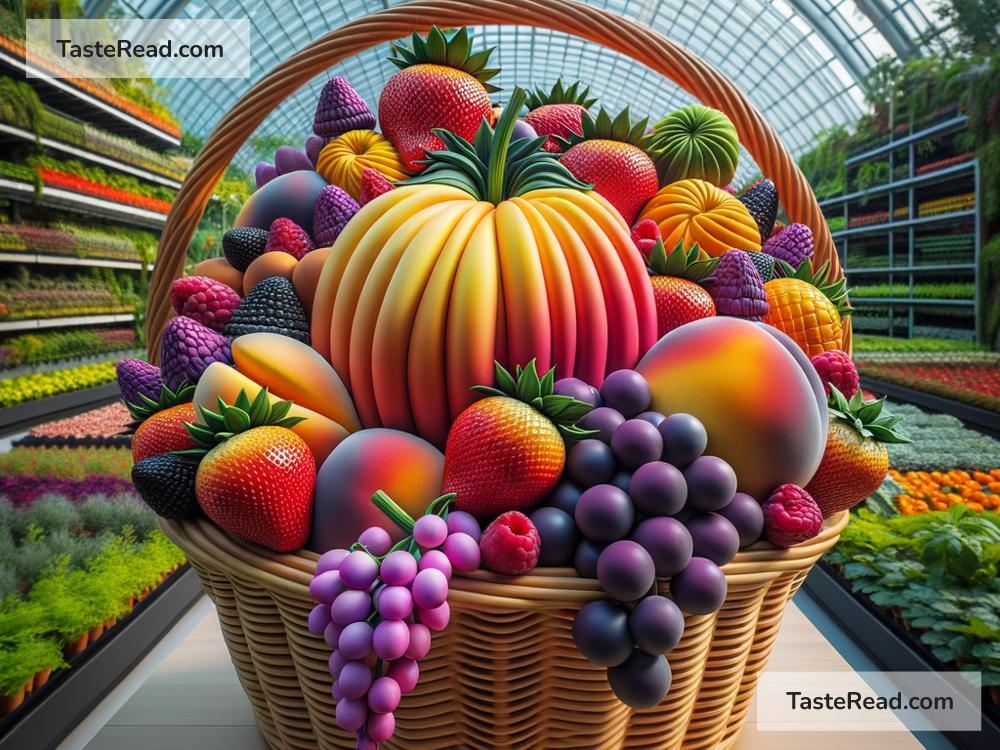How Genetic Breeding Creates Fruits With Unique Flavor Profiles
Have you ever bitten into a fruit and thought, “Wow, this tastes amazing! Why can’t all fruits taste like this?” The truth is, fruits didn’t always taste as sweet, juicy, or flavorful as they do now. Over many years, scientists, farmers, and plant breeders have worked together to create fruits with unique and delicious flavor profiles. The secret behind this improvement lies in something called genetic breeding.
Genetic breeding sounds scientific, but it’s actually a practice that’s been around for thousands of years. Farmers have been breeding crops by selecting plants with desirable traits—like sweetness, size, or juiciness—and using them to grow the next generation of plants. However, modern science has made this process faster and more advanced, and now we can use genetics to create fruits that taste better than ever before.
What Is Genetic Breeding?
Genetic breeding is the process of changing the way plants grow by mixing and matching their genes. Genes are like tiny instruction manuals inside every living thing. They decide how plants grow, what they look like, and—most importantly for fruit lovers—how they taste.
Every fruit has a combination of genes that determine its flavor. Some fruits are naturally sweeter because their genes tell them to produce more sugar. Others might be tangy or sour because they have genes that encourage acidity. By understanding and using these genetic instructions, scientists can create fruits with specific flavor profiles, like sweeter strawberries or mangoes with hints of citrus.
How Does Genetic Breeding Work?
There are a few methods plant breeders use to create fruits with unique flavors. Let’s look at some of the most common ones.
1. Selective Breeding
This is the oldest method, and it’s pretty simple. Farmers or scientists select plants that already have great traits, like extra sweetness or bold flavors, and breed them together. Over time, this creates fruits with stronger or more desirable flavor profiles.
For example, if two apple trees produce apples that are crunchy and sweet, farmers might crossbreed those trees. The resulting apples will likely be even crunchier and sweeter—perfect for a midday snack or pie-making.
2. Hybridization
Hybridization is when two different types of plants are crossbred to create something completely new. For instance, a scientist might breed one type of melon that’s super sweet with another type that’s known for being juicy. This can result in a hybrid melon that’s both sweet and juicy!
A famous example of hybridization is the cotton candy grape. Breeders carefully crossed different grape varieties until they created one that tastes like—you guessed it—cotton candy! These grapes are incredibly popular among kids and adults alike, proving how exciting hybrid fruits can be.
3. Genetic Engineering
This method is newer and uses advanced technology. Scientists study the DNA of plants (the molecules that hold genetic instructions) and directly change or add genes to create specific traits. For instance, they may tweak a fruit’s DNA to produce more sugar or reduce bitterness.
One benefit of genetic engineering is that it’s fast and precise. Instead of waiting years for selective breeding to make a difference, genetic engineering can produce changes much more quickly. It also allows scientists to create fruits that have additional benefits, like longer shelf lives or resistance to pests—but flavor is often the primary focus.
Why Create Unique Flavors?
Fruit breeders aren’t modifying fruits just for fun—they’re doing it to meet consumer demands. People love fruits that taste good, and they’re always looking for new and exciting flavors. If a fruit stands out, it becomes more popular, which is good for farmers and grocery stores alike.
Think about the tropical fruits like passion fruit, dragon fruit, or kiwi. Their unique flavors make them highly sought after in smoothies, desserts, and snacks. Creating unusual flavors doesn’t just boost sales; it also adds variety to our diets and makes eating fruits exciting.
Another reason genetic breeding is important is sustainability. By creating fruits that are better suited to certain climates or resistant to diseases, farmers can grow crops more efficiently. This means fewer resources, like water or pesticides, are needed to grow tasty and healthy fruits.
How You Benefit From Genetic Breeding
Because of genetic breeding, buying flavorful fruits has never been easier. Every time you visit a grocery store, you’re enjoying the results of years—sometimes decades—of work by plant breeders. Those super-sweet peaches, crunchy pears, or watermelon with just the right amount of zing? They’re all thanks to the science of genetic breeding.
It also allows more room for innovation. New hybrids like fruit salad trees (trees that grow multiple types of fruit on one trunk) or specially engineered berries are popping up regularly. With genetic breeding, the possibilities for fruity flavors seem endless.
Is Genetic Breeding Safe?
Some people wonder whether genetic breeding or genetic engineering might harm humans or the environment. The good news is that scientists and regulatory agencies carefully test these fruits before they’re sold. They ensure that genetically bred fruits are completely safe to eat and grow. Most of the fruit you eat today has been influenced by genetic breeding to some degree—whether through selective breeding or more advanced methods.
Conclusion
Genetic breeding is a fascinating field that has transformed the way we experience fruit. Each piece of fruit you enjoy is a little masterpiece of science and farming, combining genes to create flavors that delight our taste buds. The next time you bite into a perfectly sweet strawberry or a tangy pineapple, take a moment to appreciate the science behind its taste. Who knows? The fruit of the future might be even more flavorful, exciting, and unique!


